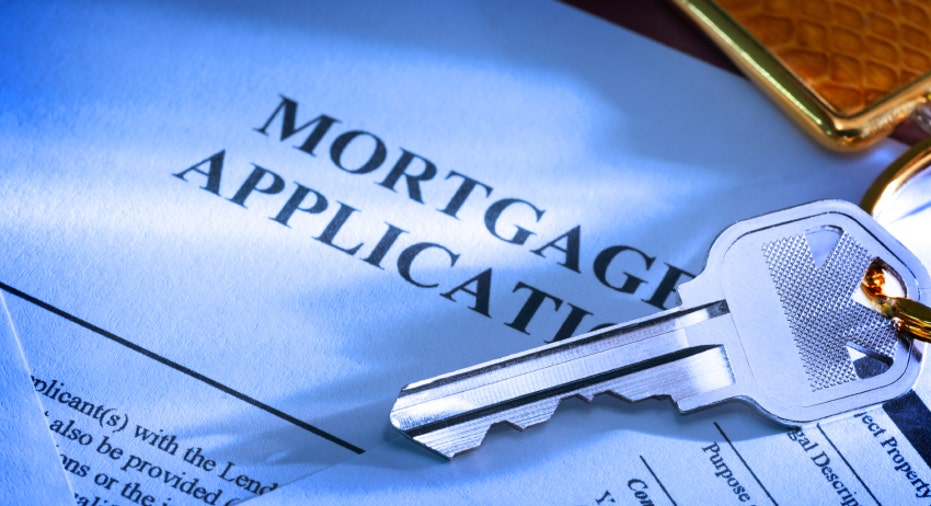ARM vs. Fixed-Rate Mortgage

Which is the better mortgage option for you: fixed or adjustable?
The low initial cost of adjustable-rate mortgages, or ARMs, can be very tempting to home buyers, yet they carry a degree of uncertainty.
Fixed-rate mortgages offer rate and payment security, but they can be more expensive.
Here are some pros and cons of ARMs and their fixed-rate brethren.
Adjustable-rate mortgages
Advantages
Feature lower rates and payments early on in the loan term. Because lenders can use the lower payment when qualifying borrowers, people can buy larger homes than they otherwise could buy.
Allow borrowers to take advantage of falling rates without refinancing. Instead of having to pay a whole new set of closing costs and fees, ARM borrowers just sit back and watch the rates -- and their monthly payments -- fall.
Help borrowers save and invest more money. Someone who has a payment that's $100 less with an ARM can save that money and earn more off it in a higher-yielding investment. Offer a cheap way for borrowers who don't plan on living in one place for very long to buy a house.
Disadvantages
Rates and payments can rise significantly over the life of the loan. A 6% ARM can end up at 11% in just three years if rates rise sharply.
The first adjustment can be a doozy because some annual caps don't apply to the initial change. Someone with an annual cap of 2% and a lifetime cap of 6% could theoretically see the rate shoot from 6% to 12% a year& after closing if rates in the overall economy skyrocket.
ARMs are difficult to understand. Lenders have much more flexibility when determining margins, caps, adjustment indexes and other things, so unsophisticated borrowers can easily get confused or trapped by shady mortgage companies.
On certain ARMs, called negative amortization loans, borrowers can end up owing more money than they did at closing. That's because the payments on these loans are set so low (to make the loans even more affordable) that they cover only part of the interest due. The remainder gets rolled into the principal balance.
Fixed-rate mortgages
Advantages
Rates and payments remain constant. There won't be any surprises even if inflation surges out of control and mortgage rates head to 20%.
Stability makes budgeting easier. People can manage their money with more certainty because their housing outlays don't change.
Simple to understand, so they're good for first-time buyers who wouldn't know a 7/1 ARM with 2/6 caps if it hit them over the head.
Disdvantages
To take advantage of falling rates, fixed-rate mortgage holders have to refinance. That means a few thousand dollars in closing costs, another trip to the title company's office and several hours spent digging up tax forms, bank statements, etc.
Can be too expensive for some borrowers, especially in high-rate environments, because there is no early-on payment and rate break.
Are virtually identical from lender to lender. While lenders keep many ARMs on their books, most financial institutions sell their fixed-rate mortgages on the secondary market. As a result, ARMs can be customized for individual borrowers, while most fixed-rate mortgages can't.
All of these things should factor into your decision between a fixed-rate mortgage and an adjustable. But there are other important questions to answer when deciding which loan is better for you:
1. How long do you plan on staying in the home?
If you're going to be living in the house only a few years, it would make sense to take the lower-rate ARM, especially if you can get a reasonably priced 3/1 or 5/1. Your payment and rate will be low, and you can build up savings for a bigger home down the road. Plus, you'll never be exposed to huge rate adjustments because you'll be moving before the adjustable rate period begins.
2. How frequently does the ARM adjust, and when is the adjustment made?
After the initial, fixed period, most ARMs adjust every year on the anniversary of the mortgage. The new rate is actually set about 45 days before the anniversary, based on the specified index. But some adjust as frequently as every month. If that's too much volatility for you, go with a fixed-rate mortgage.
3. What's the interest rate environment like?
When rates are relatively high, ARMs make sense because their lower initial rates allow borrowers to still reap the benefits of homeownership. When rates are falling, borrowers have a decent chance of getting lower payments even if they don't refinance. When rates are relatively low, however, fixed-rate mortgages make more sense. After all, 7% is a great rate to borrow money at for 30 years.
4. Could you still afford your monthly payment if interest rates rise significantly? On a $150,000 one-year adjustable-rate mortgage with 2/6 caps, your 5.75% ARM could end up at 11.75%, with the monthly payment shooting up as well.
How adjustable rates can rise
Year of ARM Rate Monthly payment First year 5.75% $875 Second year 7.75% $1,075 Third year 9.75% $1,289 Fourth year (6% lifetime cap) 11.75% $1,514 ($639 more than first year)
Now, let's compare this worst-case ARM scenario with a fixed-rate mortgage:
ARM vs. fixed mortgage as rates rise
Interest rate during 4 years Total payments during 4 years ARM: 5.75% to 11.75% $57,036 Fixed rate: 7.75% $51,600 Savings with fixed-rate mortgage over 4 years: $5,436.
In the above case, the fixed-rate mortgage costs less than the worst-case ARM scenario. Experts say that when fixed mortgage rates are low, they tend to be a better deal than an ARM, even if you plan to stay in the house for only a few years.
Compare the rates
To find out what the mortgage principal and interest would be on a particular loan you may be considering, use Bankrate's tools to find the best rates in your area, then proceed to our mortgage calculator.